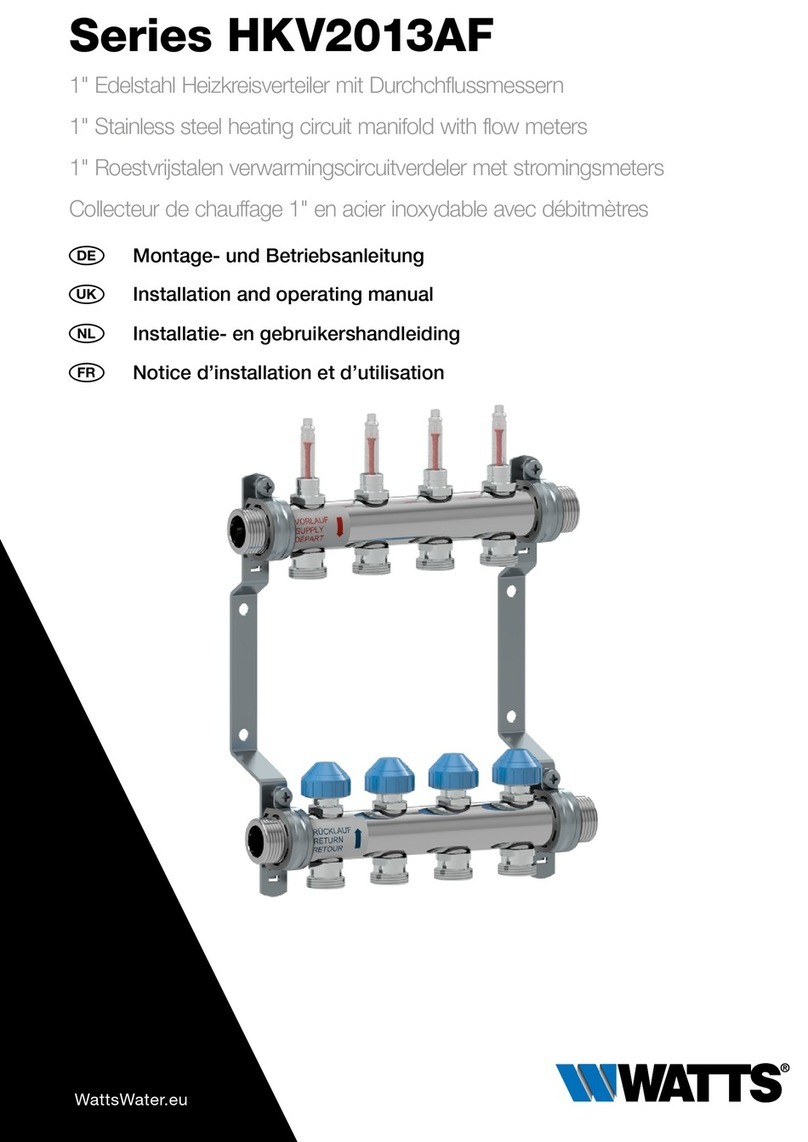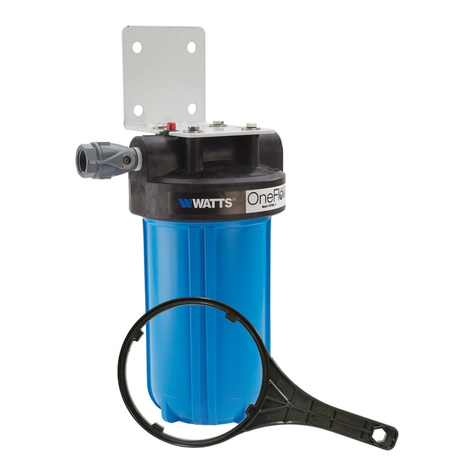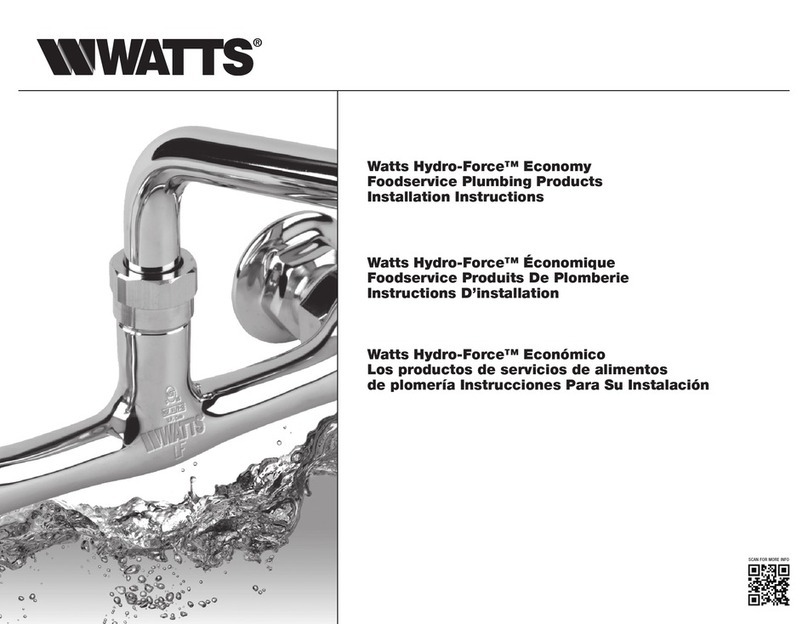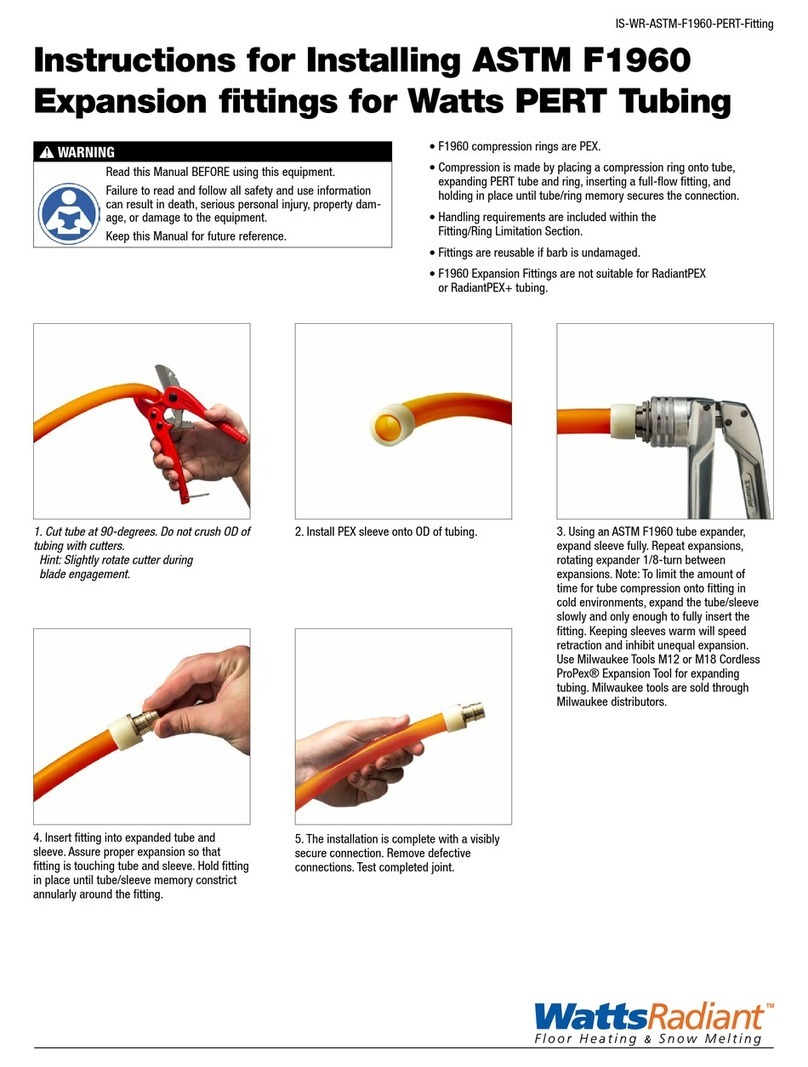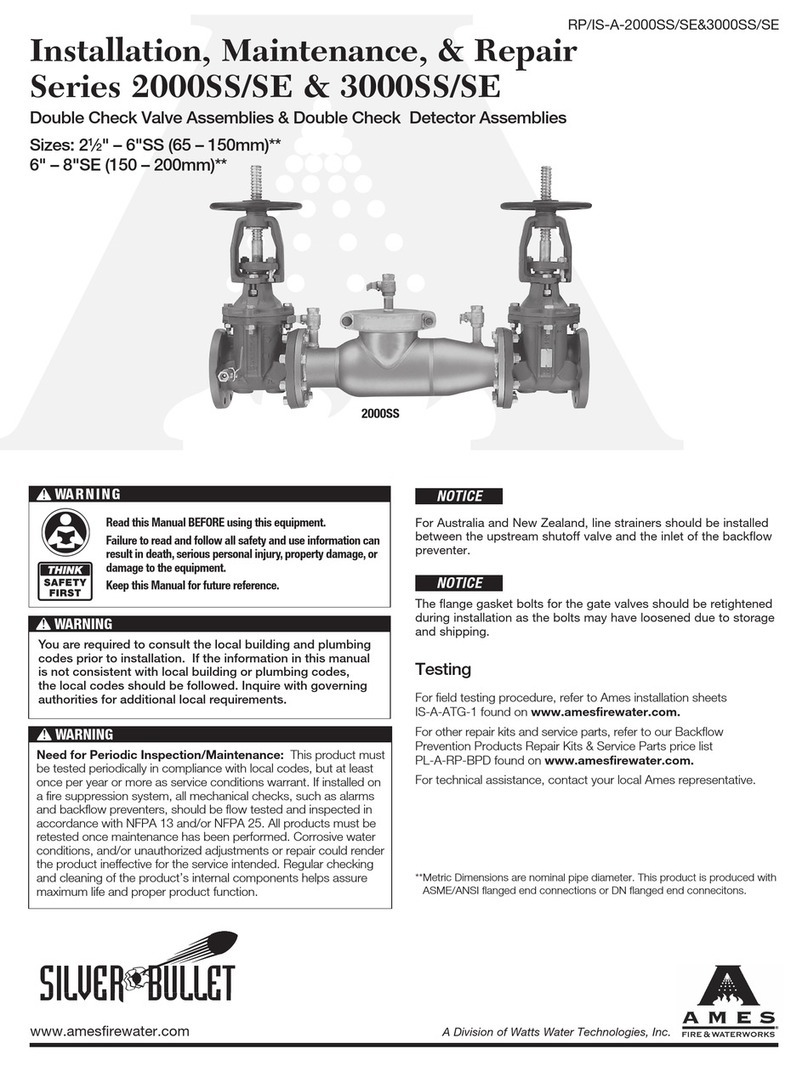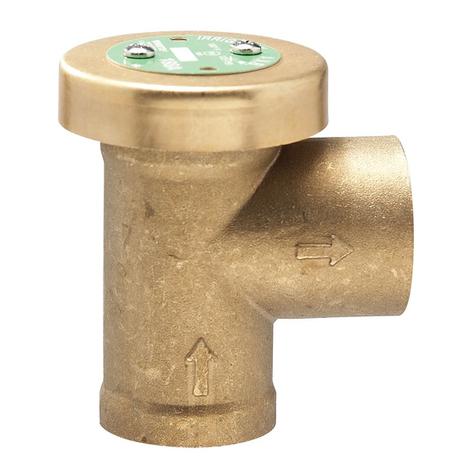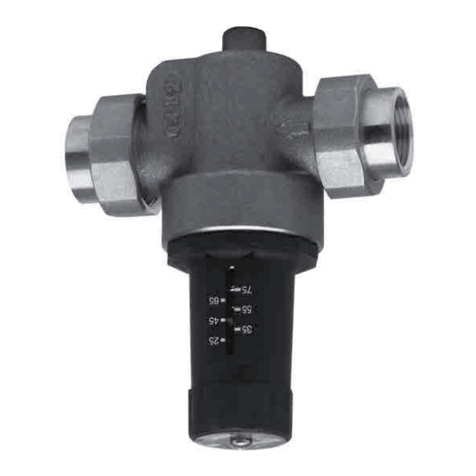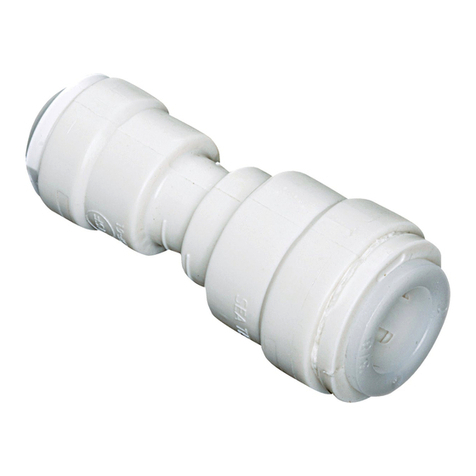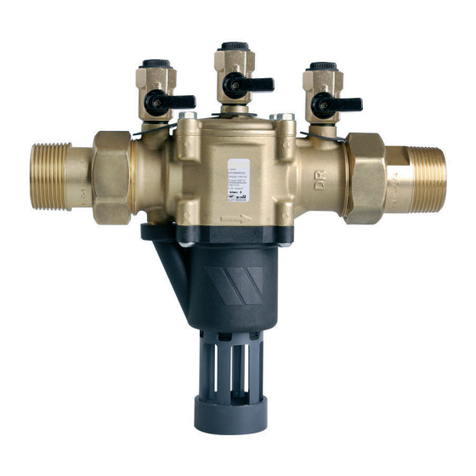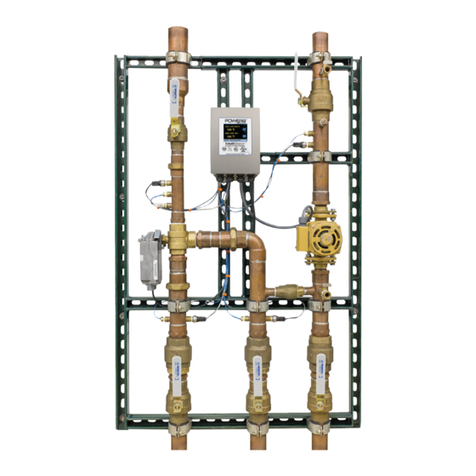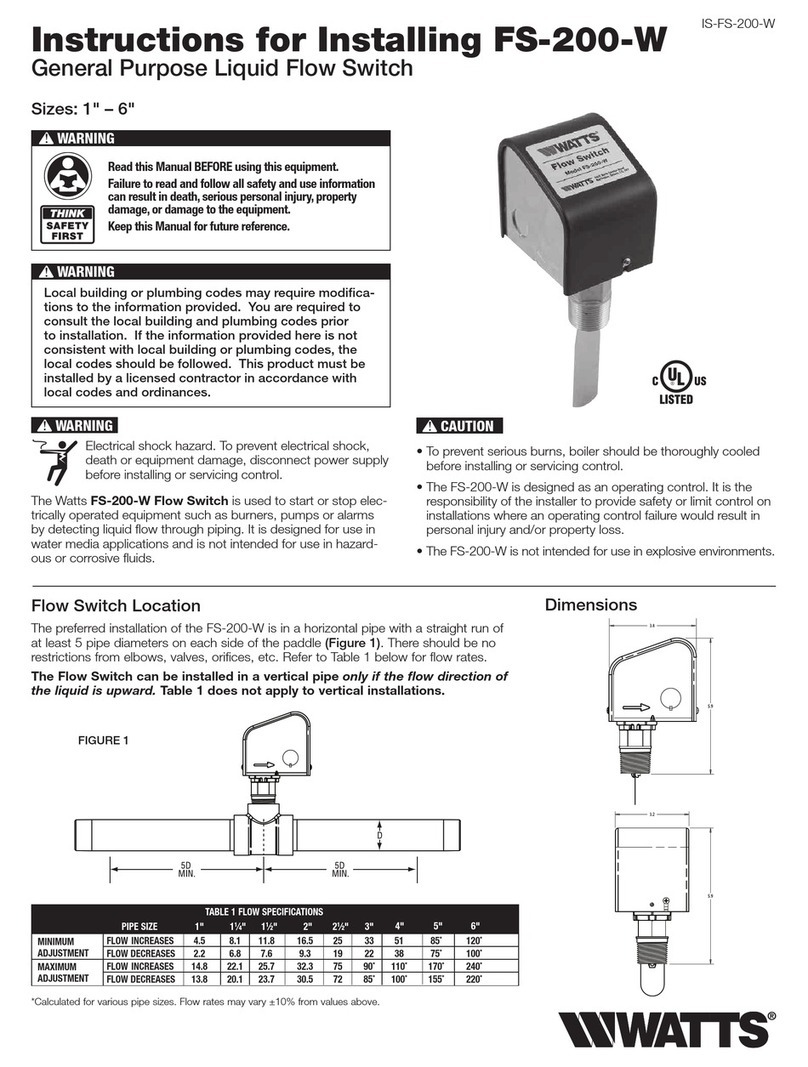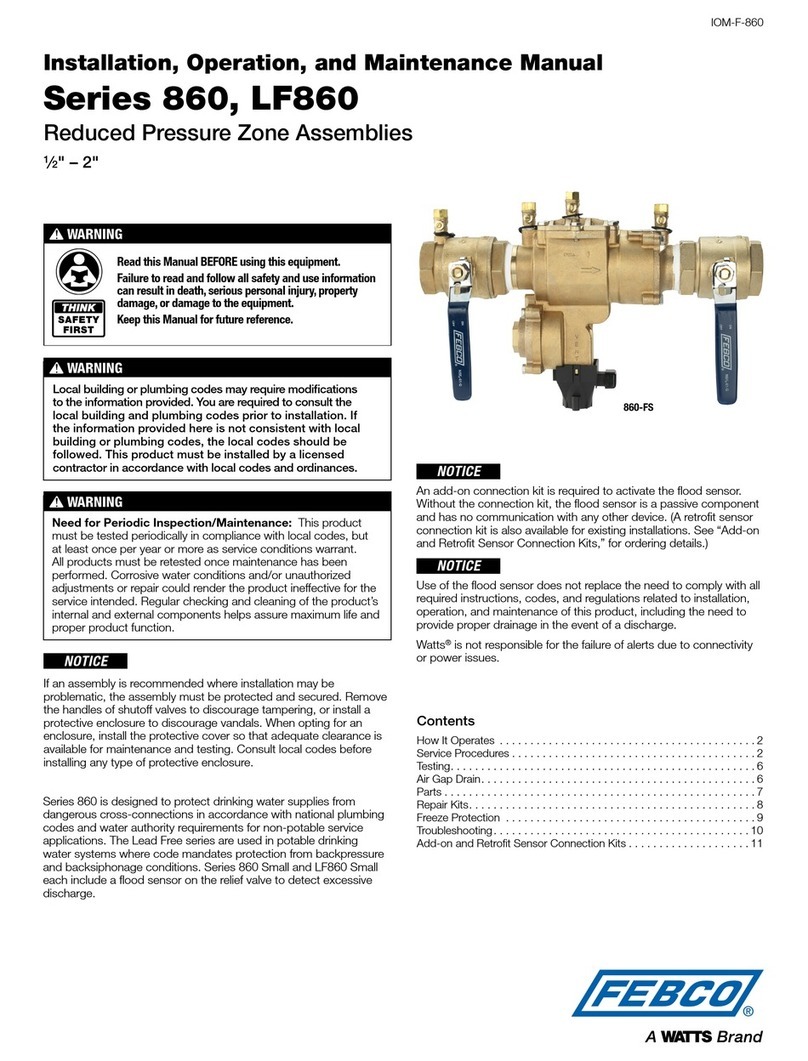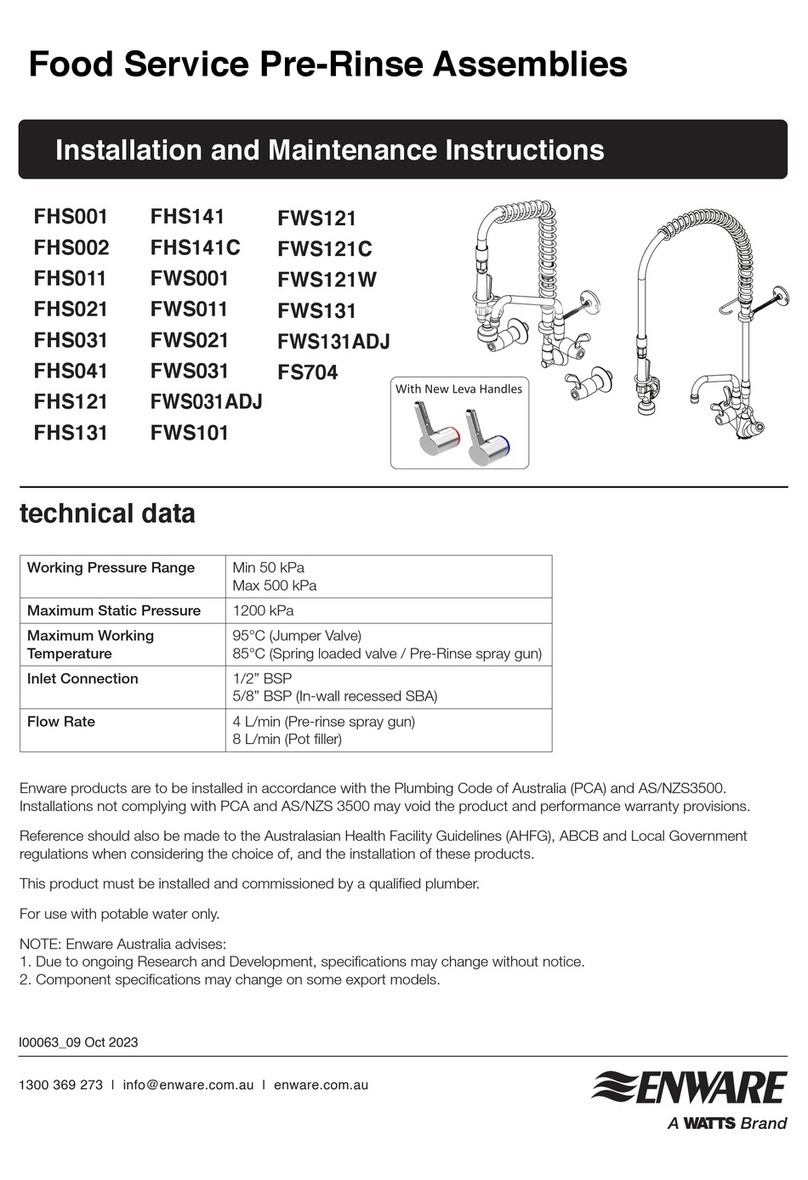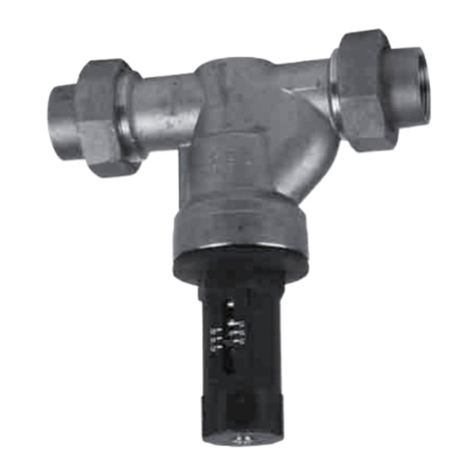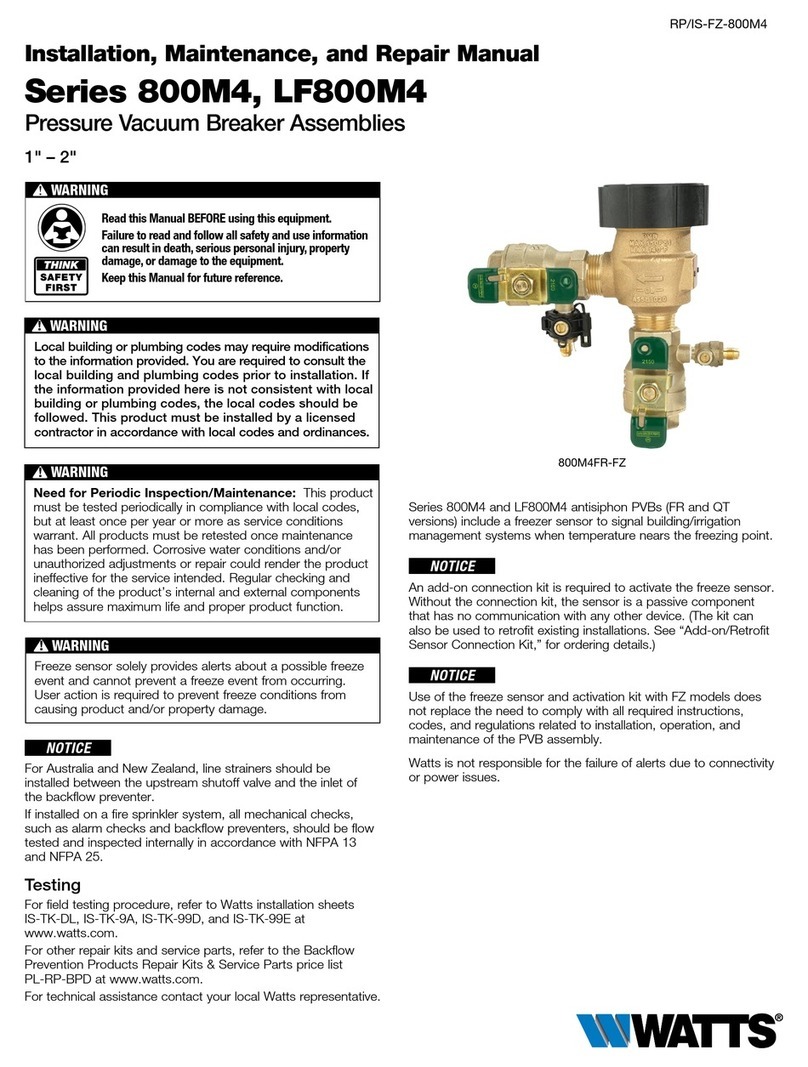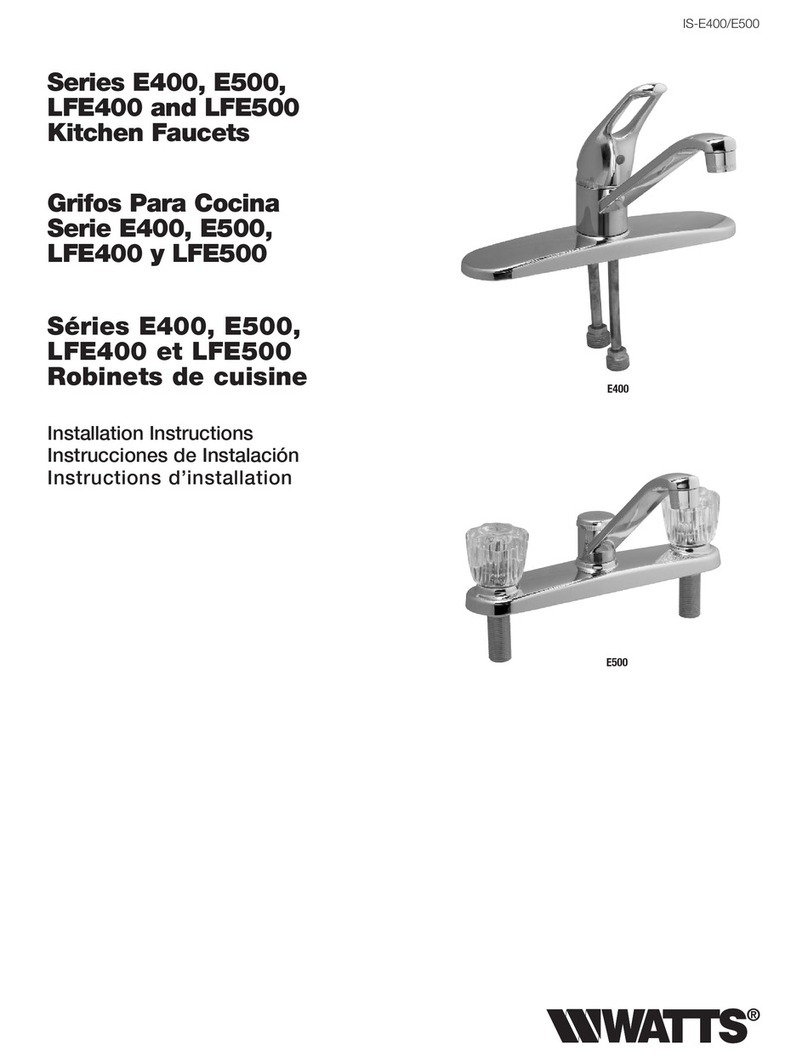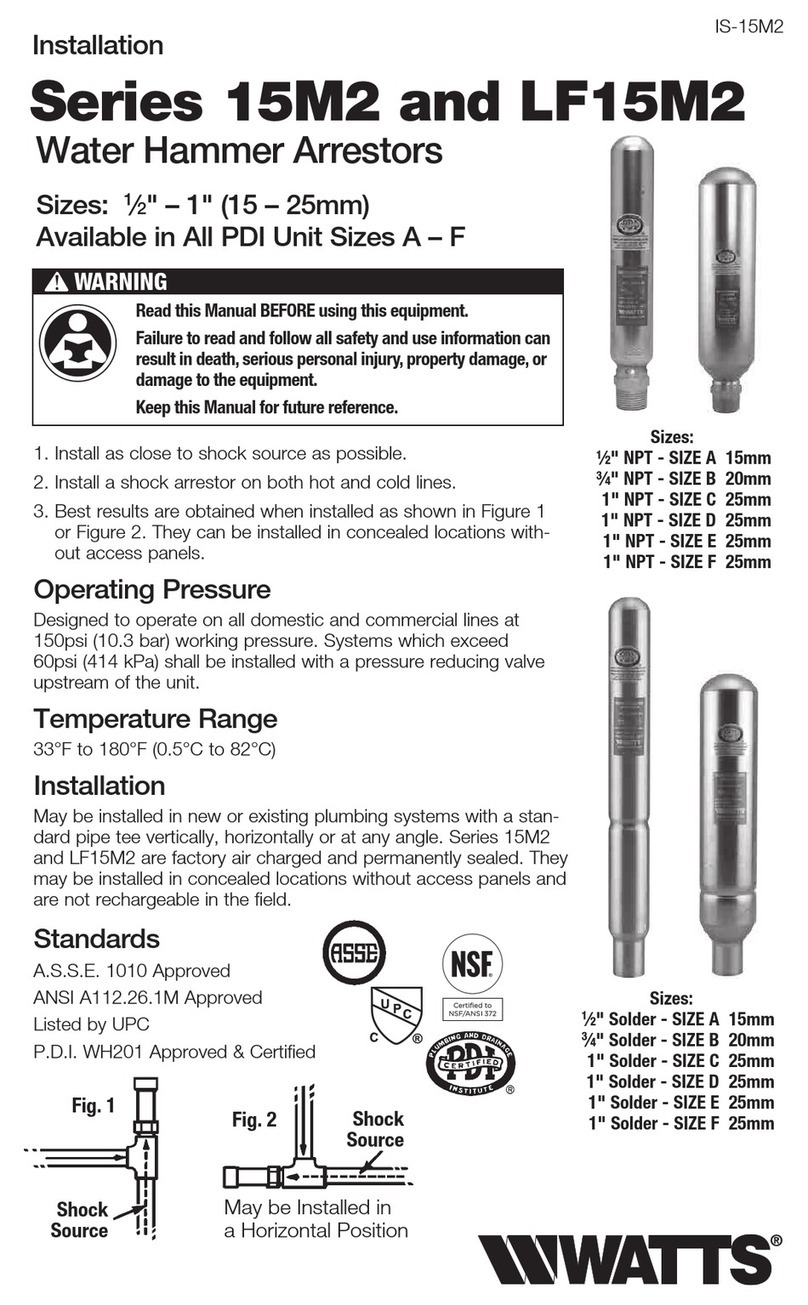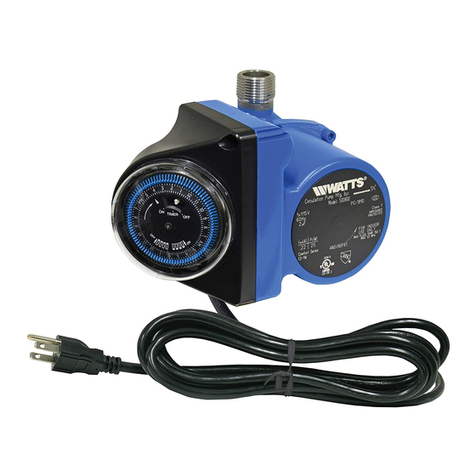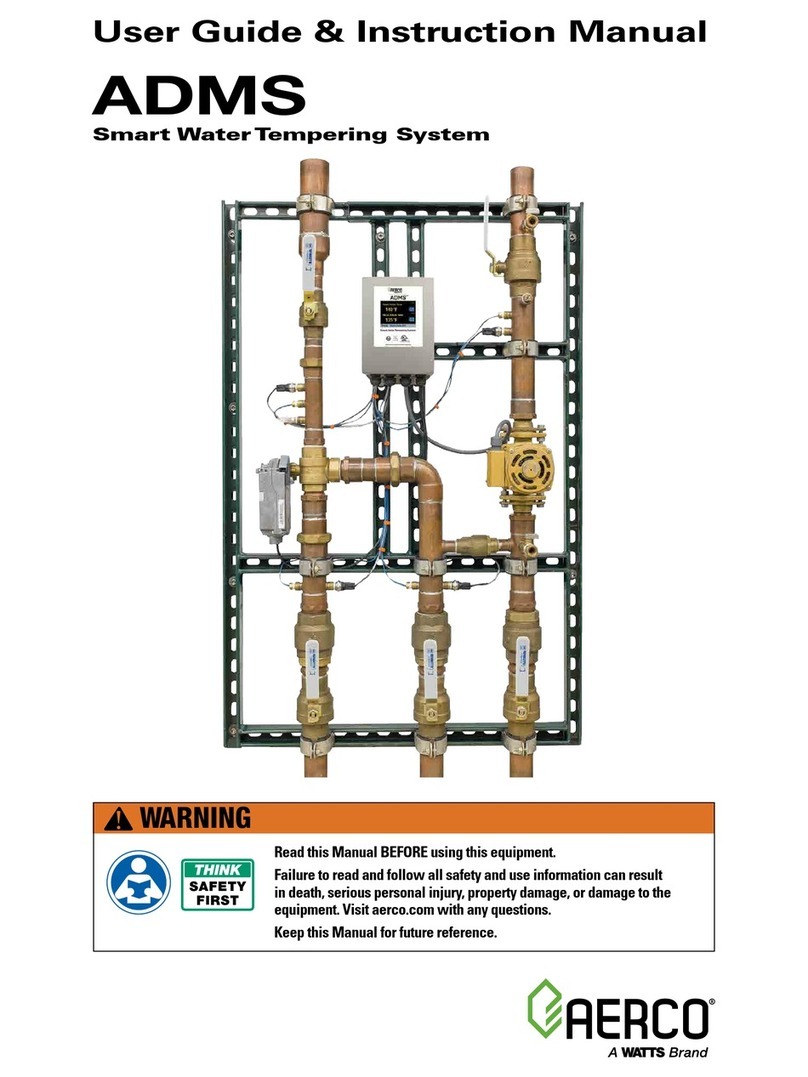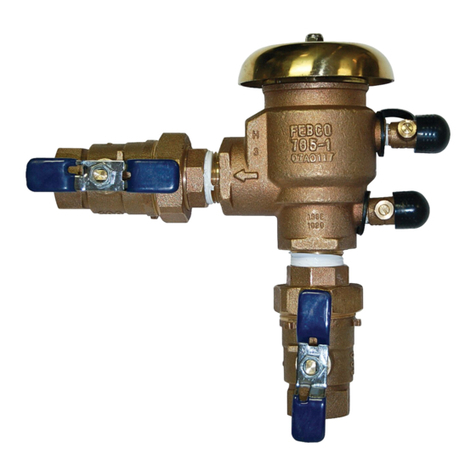
3
Basic Installation Instructions
1⁄2" - 2" (15 - 50mm)
WARNING
!Depressurize valve before servicing.
A. Series 995 must be installed in a horizontal position.
B. The 995 should always be installed in an accessible location
to facilitate testing and servicing (See page 2). Check the
state and local codes to insure that the backflow preventer is
installed in compliance, such as the proper height above the
ground.
C. We recommend a strainer be installed ahead of 995 series
assemblies to protect the internal components from unnec-
essary fouling.
CAUTION
!
Do not install with strainer when backflow preventer is used on
seldom-used water lines which are called upon only during
emergencies, such as fire sprinkler lines.
Start Up: The downstream shutoff should be closed. Open
upstream slowly and fill valve. When valve is filled, open the
downstream shutoff slowly and fill the water supply system.
This is necessary to avoid water hammer or shock damage.
D. Water discharge from the relief valve should be vented in
accordance with code requirements. The relief valve should
never be solidly piped into a drainage ditch, sewer or sump.
The discharge should be terminated approximately 12"
(300mm) above the ground or through an air gap piped to a
floor drain.
NOTICE
Relief Valve Discharge Rates
The installation of an air gap with the drain line terminating
above a floor drain will handle any normal discharge or nui-
sance spitting through the relief valve. However, floor drain
size may need to be designed to prevent water damage
caused by a catastrophic failure condition. Please refer to
Figure No. 1 for maximum relief valve discharge rates, size
and capacity of typical floor drains.
NOTICE
Do not reduce the size of the drain line from the air gap fitting.
Pipe full line size.
E. After initial installation, a discharge from the relief valve open-
ing may occur due to inadequate initial flushing of pipe lines
to eliminate dirt and pipe compounds. If flushing will not
clear, remove the first check valve and clean thoroughly.
NOTICE
Periodic relief valve discharge may occur on dead end service
applications, such as boiler feed lines or cooling tower makeup
lines due to fluctuating supply pressure during a static or no
flow condition. To avoid this discharge, install a spring-loaded
check valve ahead of the backflow assembly to “lock-in” the
downstream pressure.
F. Backflow preventers should never be placed in pits unless
absolutely necessary and then only when approved by local
codes. In such cases, provision should be made to always
vent above flood level or for a pit drain to insure an adequate
air gap below the relief port.
G. It is important that Series 995 backflow preventers be
inspected periodically for any discharge from the relief valve
which will provide a visual indication of need for cleaning or
repair of check valves. Also testing for proper operation of
the device should be made periodically in compliance with
local codes, but at least once a year or more often, depend-
ing upon system conditions. Send for IS-TK-9A, IS-TK-DP/
DL, S-TK-99E and IS-TK-99D instruction manuals for test
procedures.
Relief vent will discharge water when, during no-flow periods,
(1) the first check valve is fouled or (2) the inlet pressure to the
device drops sufficiently due to upstream pressure fluctua-
tions. Otherwise, such relief (spitting) can occur when the sec-
ond check is fouled during emergency backflow or resulting
from a water hammer condition. For trouble shooting guide
send for S-TSG.
NOTICE
Special considerations are necessary when testing assemblies
installed on Fire Prevention Systems.
Fire Protection System Installations: The National Fire protec-
tion Agency (NFPA) Guidelines require a confirming flow test
be conducted whenever a “main line” valve such as the shut-
off valves or a backflow assembly have been operated.
Certified testers of backflow assemblies must conduct this
confirming test.
Figure 1
Relief Valve Discharge Rates
Typical Flow Rates as sized by
oor drain manufacturers:
2" 55 gpm
3" 112 gpm
4" 170 gpm
1⁄2" - 2" 995
180
160
140
120
100
80
60
40
20
00 10 20 30 40 50 60 70 80 90 100 150
Zone Pressure psi
Flow Rate gpm
1⁄2"1"
3⁄4"X
11⁄4"11⁄2"2"
*
